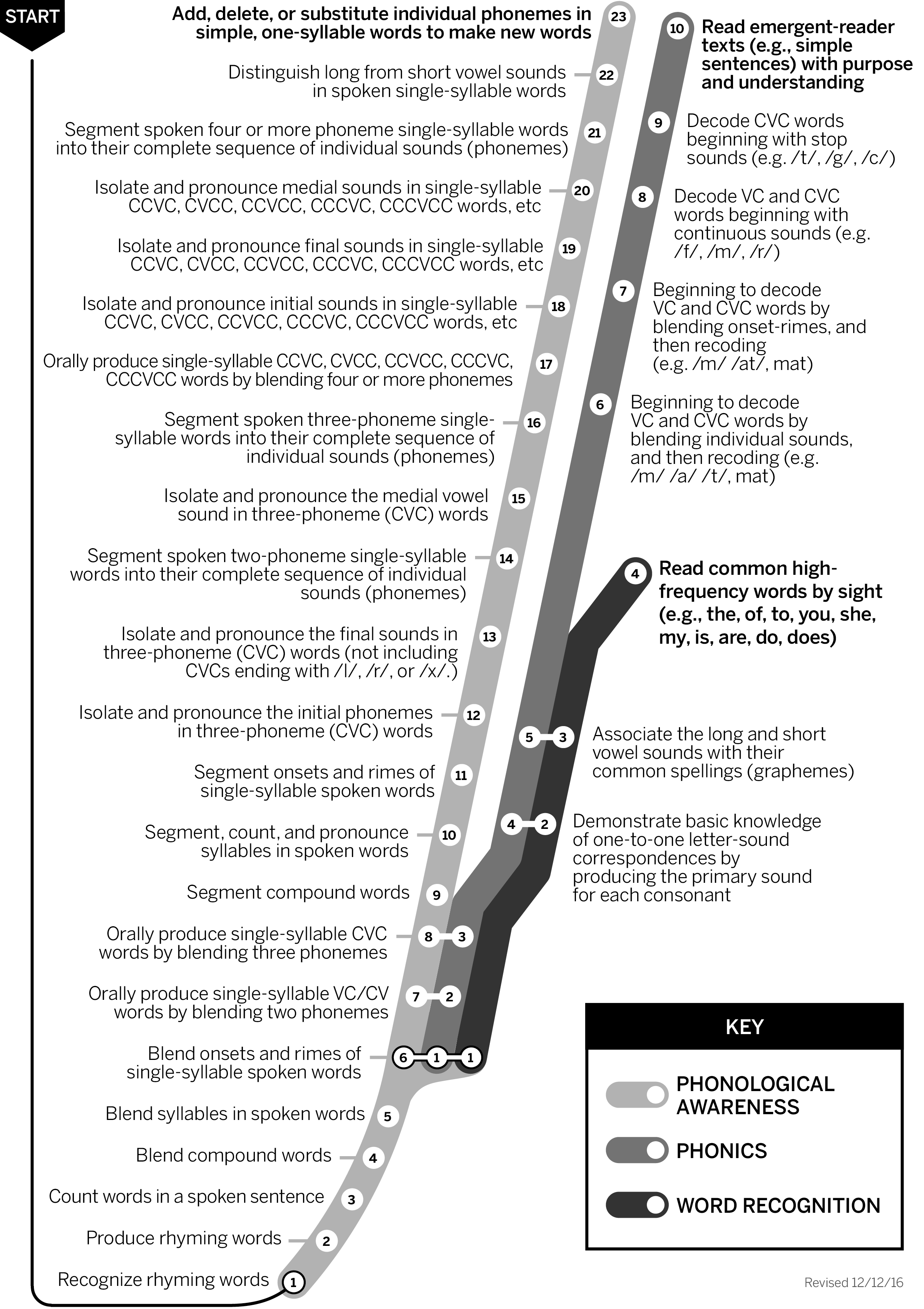Kindergarten Skills Map

Add, delete, or substitute individual phonemes in simple, one-syllable words to make new words
Distinguish long from short vowel sounds in spoken single-syllable words
Isolate and pronounce medial sounds in single-syllable CCVC, CVCC, CCVCC, CCCVC, CCCVCC words, etc
Isolate and pronounce final sounds in single-syllable CCVC, CVCC, CCVCC, CCCVC, CCCVCC words, etc
Isolate and pronounce initial sounds in single-syllable CCVC, CVCC, CCVCC, CCCVC, CCCVCC words, etc
Isolate and pronounce the medial vowel sound in three-phoneme (CVC) words
Isolate and pronounce the initial phonemes in three-phoneme (CVC) words
Segment onsets and rimes of single-syllable spoken words
Segment, count, and pronounce syllables in spoken words
Orally produce single-syllable CVC words by blending three phonemes
Orally produce single-syllable VC/CV words by blending two phonemes
Blend onsets and rimes of single-syllable spoken words
Blend syllables in spoken words
Count words in a spoken sentence
Read emergent-reader texts (e.g., simple sentences) with purpose and understanding
Decode CVC words beginning with stop sounds (e.g. /t/, /g/, /c/)
Decode VC and CVC words beginning with continuous sounds (e.g. /f/, /m/, /r/)
Beginning to decode VC and CVC words by blending onset-rimes, and then recoding
(e.g. /m/ /at/, mat)
Read common high-frequency words by sight (e.g., the, of, to, you, she, my, is, are, do, does)
Associate the long and short vowel sounds with their common spellings (graphemes)
